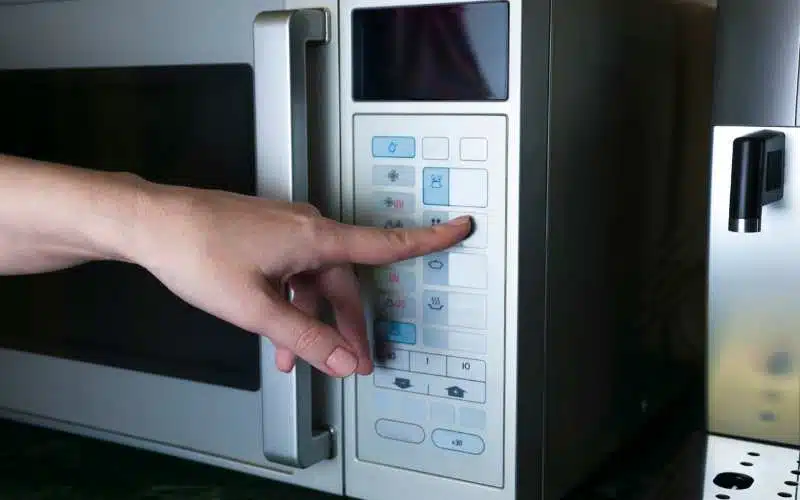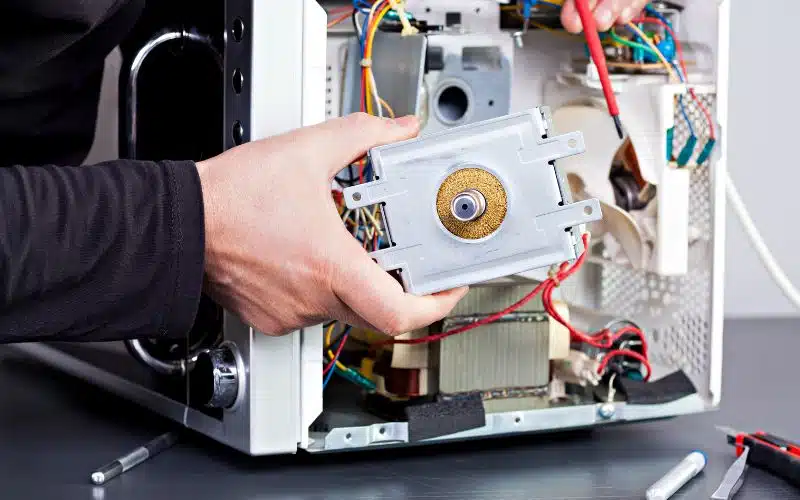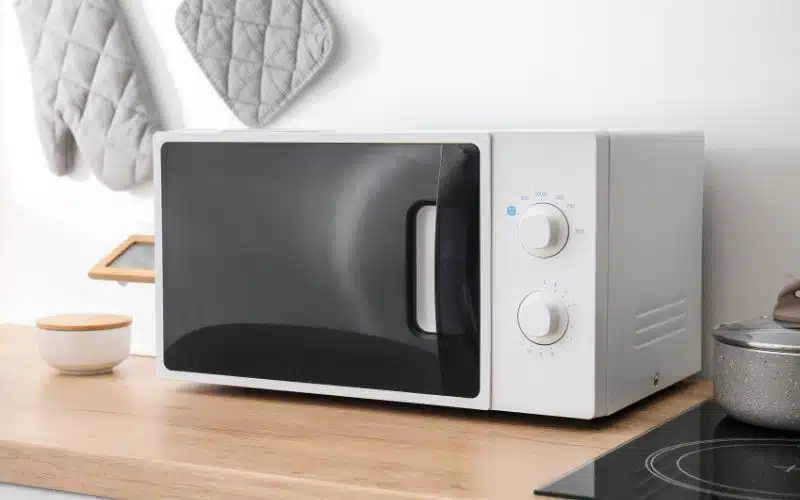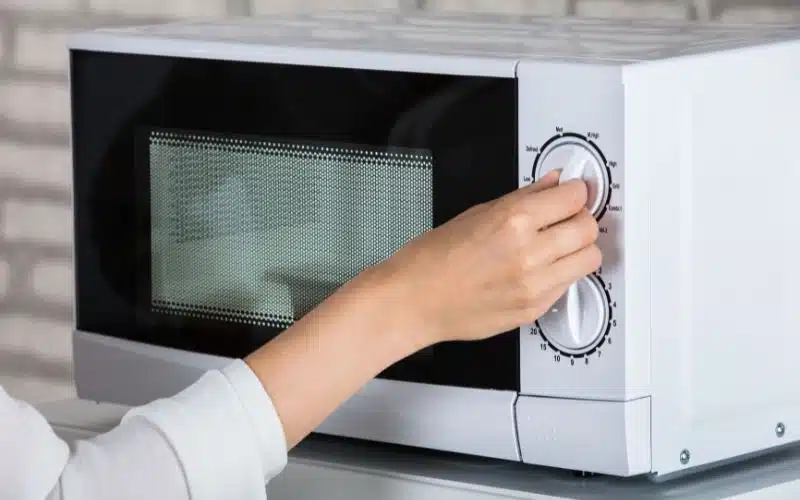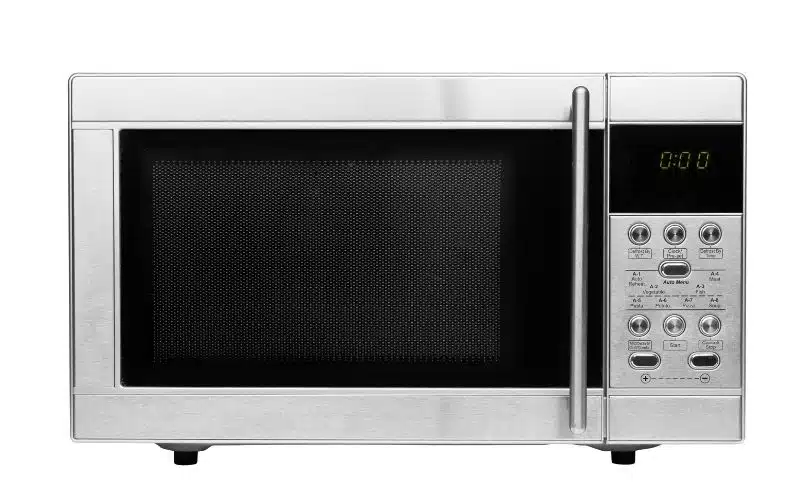Almost every modern household has a microwave in its kitchen. For a fact, not owning one makes the kitchen appear incomplete.
Just like washing machines and other machines invented to make life easier for humanity, it is one of humanity’s greatest inventions.
However, not all materials are suitable to be put inside the Microwave because some of them will react with the waves it generates, like a thin aluminum foil.
Accidentally putting foil paper in the Microwave can lead to a fire. There may be no explosions since Aluminum isn’t a highly reactive element, but the chances of it sparking up into flames are very high.
Is it Bad to Put Foil in the Microwave?
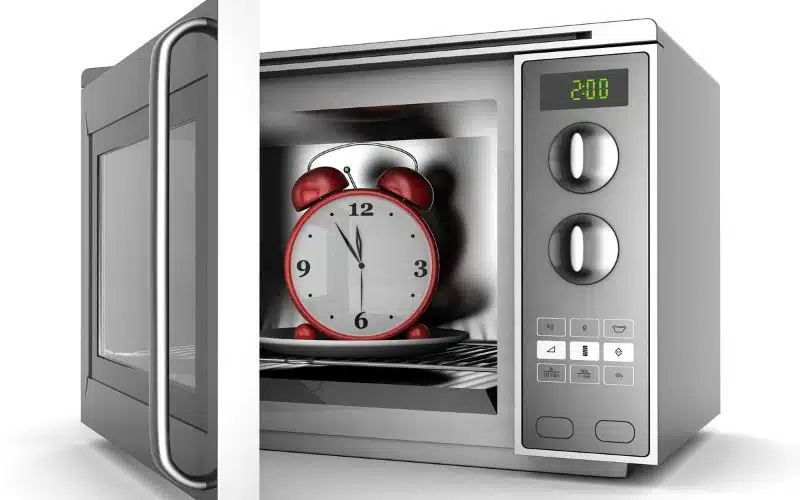
Yes, it is very dangerous to put Foil in the Microwave. The principle of operation of a microwave involves generating radio waves which are what is absorbed by the food particles as heat.
The waves generated move at a very high frequency of 2,500 megahertz, which thin pieces of metal like the aluminum foil cannot absorb without flaming up.
By observation, there is a metal that serves as a wall in the microwave oven.
These microwave ovens are made of very thick metal capable of absorbing some of the high-frequency waves without burning.
The microwave oven metal has a mirror-like surface reflecting the waves on the food heating.
Is it Safe to Eat Food That is Sparked in the Microwave?
It is safe to eat food that has sparked in the Microwave. But to be safer, it is better to avoid putting thin pieces of metal, which will likely cause a fire in the Microwave.
If by luck, you can heat food in thin pieces of metal sheets like the foil paper without it sparking, the food is still safe to be eaten.
Due to the spark or burning of the Foil, the food may have a smoky taste which isn’t too healthy for consumption.
How Long Can Aluminum Foil be in the Microwave?
Even for the shortest period, thin pieces of metal like aluminum foil are very likely to spark.
Therefore, it is advisable to only use microwave-safe materials like porcelain, glass, or plastic when microwaving food.
Since they are non-metals and cannot absorb reflected microwaves, they’re safer to use.
Putting Aluminum foil in the Microwave may not cause any loud explosions, but the thin edges of the Foil are susceptible to burning up quickly.
Unlike thick metal, aluminum foil cannot withstand high-frequency heat for the same period thick metal sheets would.
That is why the microwave oven metal does not flame up when exposed to the same wave frequency as the Foil. It may require higher-frequency waves to burn it.
What Happens if You Accidentally Put Aluminum Foil in the Microwave?
If you accidentally put aluminum foil in the Microwave and turn it on, the Foil may spark and cause a fire or damage the Microwave.
When a microwave is heating, it generates an electric field due to the current passing through it.
This electric field generated causes the flow of electricity through any metal in the Microwave, and if you put thin pieces of metal like aluminum foil in it, it will spark.
This spark can lead to a bigger fire or even damage the Microwave.
The flow of electricity through the foil paper alone and the frequency with which the radio waves are generated (2,500 megahertz) is very high.
While the thick microwave oven metal can absorb this frequency, it is too much for thin pieces of metal to absorb.
Is it Safe To Use a Microwave After Putting Foil in It?
If your Microwave made it through a spark from putting Foil in it without any damage, it is safe to continue usage, albeit not immediately.
The smoke from the previous burn lingering in the microwave oven is absorbed into the next meal you’re heating.
It will leave a not-so-pleasant taste and smell in your food and kitchen area if the Microwave hasn’t been cleaned.
How Do You Clean the Microwave After Burning oil?
Cleaning up burnt stains in the Microwave is pretty easy, but this is dependent on the degree of fire caused by heating thin pieces of metal in it.
In cases where the fire must have been intense enough to damage the Microwave, mere soap and sponge wash will not fix the damage.
But if it’s just a spark that left some burnt stains and spilled oil, it can be easily cleaned using the following procedures.
- Vinegar and soap water
- Baking soda and soap water
- Lemon and water
- Acetone nail polish remover and water.
#1. Vinegar and Soap Water
Using vinegar and soap water is a good combination for taking care of stubborn burnt stains in the Microwave.
The vinegar is a suitable solvent and dissolves stains perfectly, but in many cases, it can only take care of the stains, not the burnt smell.
Nevertheless, it is still very effective in cleaning up burnt foil stains.
For a faster result, use it for pretreatment before eventually scrubbing.
- Add two tablespoons of vinegar to a cup of water and spray in the Microwave with a spray bottle. Or pour it directly into the microwave pan and around the microwave oven metal.
- Leave it for 60- 120 seconds to allow the stains to absorb the mixture properly.
- Add a few drops of your favorite liquid dish soap or detergent to water and scrub using a sponge.
- Use a wet kitchen towel to mop the Microwave and leave it open for some time so that the smell can escape.
#2. Baking Soda and Soap Water
You can use it in place of the vinegar for stubborn stains. Baking soda is a good cleaning agent that breaks down stain debris thoroughly if used right.
However, there are cases where your food may be oily, and when a spark occurs, it will spill around the microwave oven metal and pan.
- Make a paste out of baking soda and water.
- Apply the paste to the stained areas and allow it to absorb for some time.
- Use a sponge to scrub and clean with a wet towel, then allow to air dry.
#3. Lemon and Water Mixture
For the most part, this is the best way to take care of any offensive odor in the Microwave, be it the smell of fermented food particles or burnt Foil.
In addition, the lemon flavor has a refreshing scent that is strong enough to overpower many odors around the house.
- Cut a lemon into small pieces and soak it in water.
- You can heat the lemon in the Microwave, which will cause it to boil and evaporate within the oven.
- Please leave it to stay in the oven for some time with the oven door closed after microwaving it.
- The potent scent of the lemon will envelop the smoke and eliminate the burnt smell.
#4. Acetone Nail Polish
Acetone-based nail polish remover is a widely known solvent that dissolves stubborn stains. It is strong enough to dissolve hard stains yet mild enough not to erode the surface on which it has been used.
It is for cleaning greasy and dried food stains on the microwave oven metal in straightforward steps.
- Pour a generous amount of the acetone-based nail polish on a sponge or kitchen towel and scrub vigorously. This method is very effective when you urgently need to use the Microwave. Else, it is easier to pretreat.
- For pretreatment, sprinkle some of the acetone-based nail polish inside the microwave oven and allow it to absorb the stains.
- Deep a sponge in soap-based water and scrub gently.
- Use a wet kitchen towel to mop the Microwave and leave the door open so it can air dry and allow the burning smell to escape in time.
Dealing with burnt Foil in the Microwave can happen to anyone unaware of the hazards of heating thin pieces of metal.
And especially if the person has little idea about what thin pieces of metal are and how much heat they can withstand.
That is why for many kitchenware manufacturers now, it is a matter of duty to indicate which of their products is Microwave safe and which is not.
Many bowls and ceramic plates come with symbols that tell if they’re safe to be put into the Microwave or not, which is usually inscribed behind.
Unfortunately, no matter how careful you try to handle some equipment around the house, you can not always avoid some faults.
Conclusion
It is always advisable to avoid putting thin pieces of metal or any metallic material in the Microwave.
But an uninformed child who isn’t aware of how thin pieces of metal react when exposed to high-frequency radio waves may fall victim.
To avoid this, keep the Microwave out of your children’s reach.



